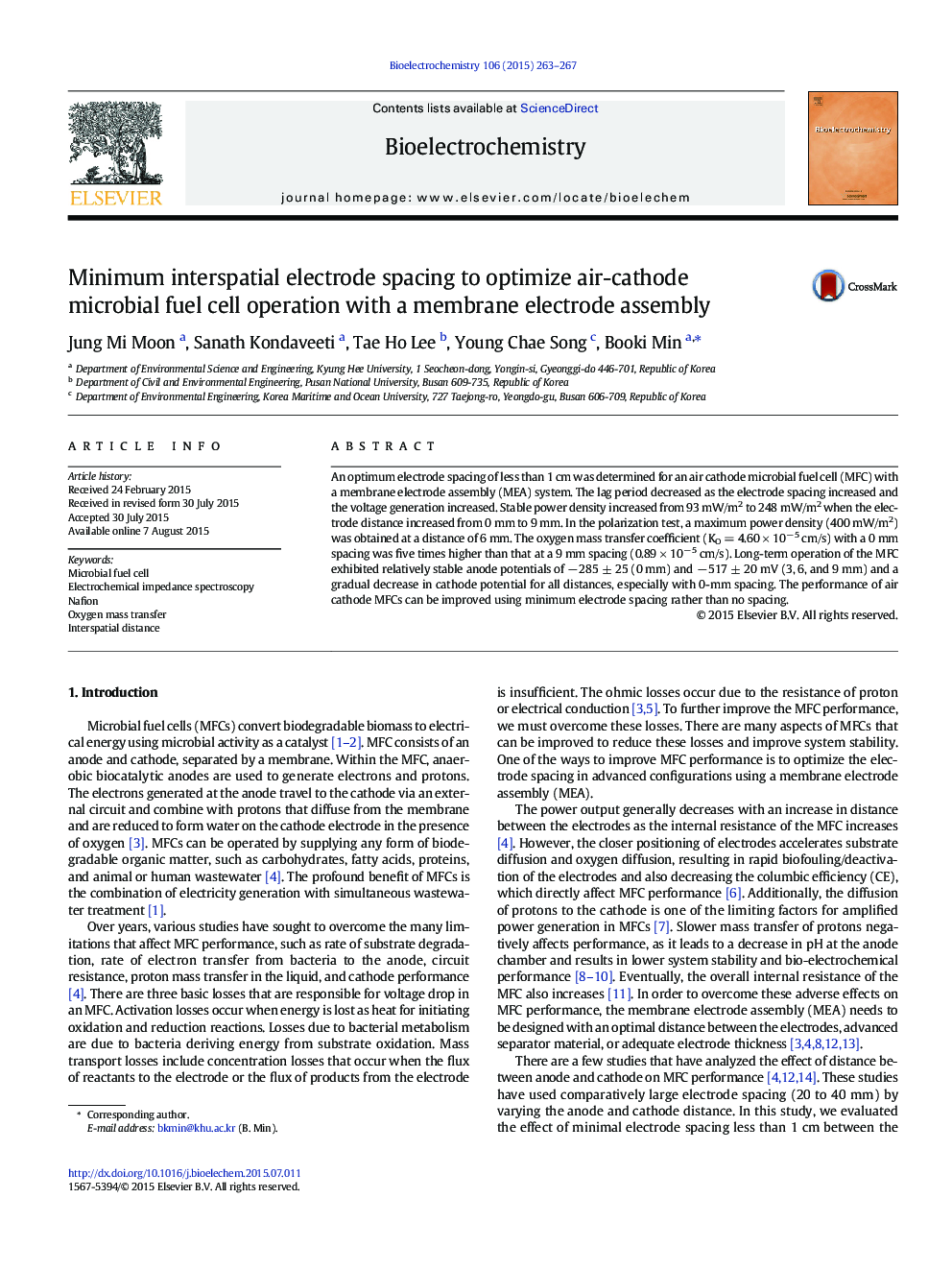| Article ID | Journal | Published Year | Pages | File Type |
|---|---|---|---|---|
| 1270735 | Bioelectrochemistry | 2015 | 5 Pages |
•Minimum electrode spacing was determined to optimize a single chamber MFC operation.•Electrode spacing decreased oxygen diffusion and lag phase for power generation.•A 6-mm electrode spacing exhibited a maximum power density.•In long-term operation, MFC performance was improved with electrode spacing.
An optimum electrode spacing of less than 1 cm was determined for an air cathode microbial fuel cell (MFC) with a membrane electrode assembly (MEA) system. The lag period decreased as the electrode spacing increased and the voltage generation increased. Stable power density increased from 93 mW/m2 to 248 mW/m2 when the electrode distance increased from 0 mm to 9 mm. In the polarization test, a maximum power density (400 mW/m2) was obtained at a distance of 6 mm. The oxygen mass transfer coefficient (KO = 4.60 × 10− 5 cm/s) with a 0 mm spacing was five times higher than that at a 9 mm spacing (0.89 × 10− 5 cm/s). Long-term operation of the MFC exhibited relatively stable anode potentials of − 285 ± 25 (0 mm) and − 517 ± 20 mV (3, 6, and 9 mm) and a gradual decrease in cathode potential for all distances, especially with 0-mm spacing. The performance of air cathode MFCs can be improved using minimum electrode spacing rather than no spacing.
